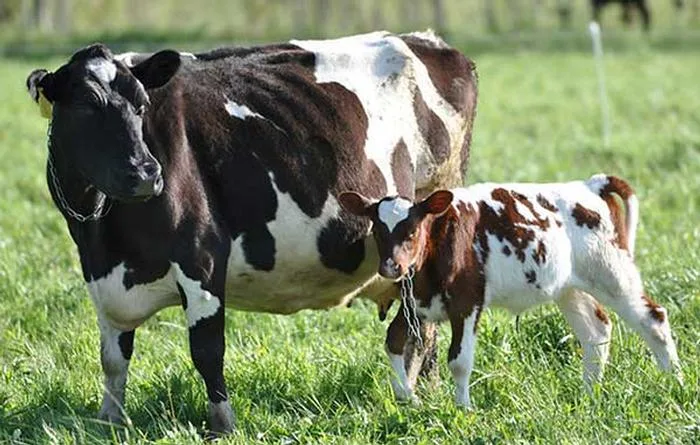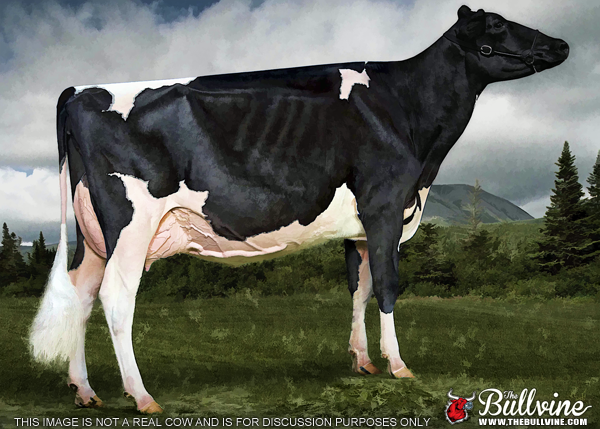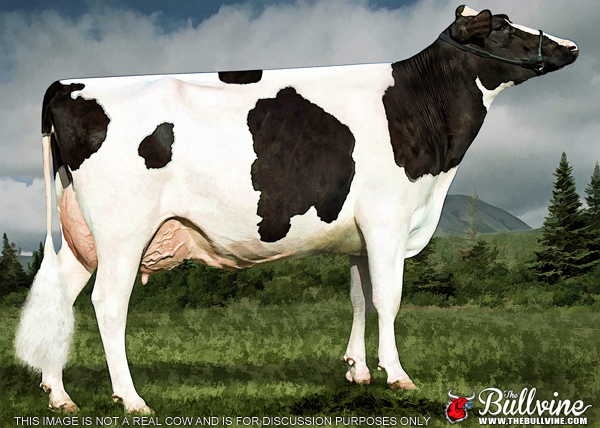Are you curious about how the August CDCB updates will impact your herd? Learn what changes in yield traits and heifer livability mean for your farm’s future.
Summary: Have you been keeping up with the latest updates in dairy farming evaluations? August 2024 brought significant changes to the CDCB evaluations, impacting everything from yield traits like Milk, Fat, and Protein to Heifer Livability. Are you curious about how these updates could affect your herd? These changes are designed to make evaluations more accurate and reflective of current herd conditions: the introduction of the 305-AA standard for yield measurement, significant shifts in PTAs for different breeds, updated Heifer Livability values, and new SNP List and BBR reference population updates affecting crossbred evaluations. Understanding these changes can offer invaluable insights for making more informed breeding decisions. The 305-AA standardization uses a 36-month average age for yield data, improving PTAs for Holsteins but not for Jerseys. These improvements aim to enhance the precision and accuracy of genetic tests, allowing dairy producers to make better-informed choices about their herd’s future. The latest SNP and BBR updates have resulted in variations that could financially impact dairy farms with crossbred animals. Are you interested in how this might play out for you? Keep reading to gain more insights.
- August 2024 updates in CDCB evaluations introduce significant changes affecting Milk, Fat, Protein, and Heifer Livability traits.
- The 305-AA standardized yield measurement now uses a 36-month average age, which impacts Predicted Transmitting Abilities (PTAs).
- Holsteins observed an increase in PTAs for Milk, Fat, and Protein, while Jerseys saw a decline.
- Updated Heifer Livability values reflect two years of additional data, enhancing reliability.
- SNP List and BBR reference population updates bring notable changes for crossbred animal evaluations.
- These changes aim to provide more accurate and contemporary genetic assessments to aid in better breeding decisions.

Have you ever wondered how the newest genetic evaluation updates may affect your herd? Or what would these upgrades imply for your future breeding decisions? If you answered yes, you’ve come to the correct spot. This August, the Council on Dairy Cattle Breeding (CDCB) announced several significant modifications in genetic assessments that would impact the dairy farming environment. We’re discussing new standards like the 305-AA yield measurement, Heifer Livability updates, SNP list revisions, and Breed Base Representation (BBR) values. These may seem complex, but stay with me—understanding them might be a game changer for your farm. These adjustments are more than modest modifications; they significantly influence the parameters you use to make essential breeding and management choices. I’ll review each one, from how Holsteins are increasing in milk, fat, and protein to why Jersey PTAs are declining.
You’ll also learn about the rippling effects on qualities such as Productive Life and Cow Livability. The August 2024 genetic examinations resulted in momentous developments that might change how you see your herd’s genetic potential. This is important because, let’s face it, keeping on top of genetic examinations will improve your herd’s production and, ultimately, your bottom line and open up new possibilities for growth and improvement on your farm. Intrigued? Let’s dig in and see what these changes imply for you and your farm.
The August 2024 CDCB Evaluations Brought Several Noteworthy Updates. Let’s Break Them Down:
The August 2024 CDCB evaluations brought several noteworthy updates. Let’s break them down:
- 305-AA Standardized Yield Measurement: This revision establishes a new standard for yield records, moving from 305-ME mature equivalent to a 36-month average age. It also revises age, parity, and season adjustment factors. This standardization is more precise in capturing environmental variables and is breed-specific.
- Heifer Livability: The revised Heifer Livability ratings incorporate two years’ worth of lost data and additional editing criteria tailored to herd circumstances. This increases dependability and influences linked qualities such as Productive Life (PL) and Cow Livability (LIV).
- SNP List and BBR Reference Population Updates: These changes include a new SNP list and a BBR reference population update, affecting purebred and crossbred animals’ status and genetic assessments. This modification has raised assessment variability, particularly in hybrid animals genotyped at low density or with incomplete pedigrees.
Why the 305-AA Change Matters for Your Dairy Farm’s Future
The launch of 305-AA has sparked interest among dairy producers. This is a gradual change but a substantial shift in how yield data are standardized. So, what precisely is 305-AA? Essentially, it is a technique of standardizing yield data that uses a 36-month average age rather than the older 305-ME (mature equivalent). This implies that the new approach considers the average age, parity, and seasonal modifications for five climatic areas in the United States. These improvements are intended to provide a more realistic picture of environmental variances. It is also breed-specific; therefore, the influence varies according to the breed.
Why does this matter? Accurate yield data is critical for making educated breeding and herd management choices. The new changes consider more specific environmental characteristics, providing a more precise evaluation customized to each breed.
Let’s get specific. For Holsteins, the 305-AA modification improved the Predicted Transmitting Ability (PTA) for Milk, Fat, and Protein. This has resulted in a minor increase in the Lifetime Net Merit $ (NM$) index, which typically ranges from +10 to +15 NM$, depending on whether we’re talking genetic or proven bull groupings. This is a welcome improvement for anyone interested in Holsteins.
On the other hand, the Jerseys have not fared well. Their PTAs for milk, fat, and protein decreased significantly—by around 100, -6, and -6 pounds, respectively. As a result, their NM$ index declined by an average of -70 to -50 NM$. Jersey breeders may be concerned about the long-term economic worth of their herds. Understanding the reasons for these changes in the Jersey breed is essential, as they can influence future breeding decisions.
You may ask why these adjustments were made. The fundamental goal is to improve the precision and accuracy of genetic tests, allowing you to make more informed choices about the future of your herd. While the change may be difficult for certain breeds, notably Jerseys, the ultimate objective is to use more accurate data to increase productivity and profitability. This reassurance should give you the confidence to make the best decisions for your herd.
Spotlight on Heifer Livability: Unpacking the CDCB Updates
The most recent CDCB revisions concentrate on heifer longevity values. Incorporating two years’ worth of previously overlooked data has resulted in larger-than-usual adjustments. Consider this: all of those missed records are suddenly coming into play! This change contributes to a better picture of heifer longevity, boosting animal dependability.
But that is not all. New editing criteria also focus more on herd circumstances. Although this is a modest change, it has a significant effect. Dairy producers like you can make better choices with more thorough and accurate data.
These Heifer Livability alterations also affect linked attributes. Productive Life (PL) indicates a minor average reduction of roughly -0.2. Cow Livability (LIV) is also indirectly impacted. How does this affect your day-to-day operations? Reliable data allows you to trust these assessments, knowing that the figures you’re looking at are more realistic representations of your herds.
SNP List and BBR Updates: What’s the Impact on Your Crossbred Animals?
The newest upgrades to the SNP list and BBR reference population have resulted in significant modifications. What’s fascinating is how these updates affect crossbred animals and the variation in their judgments. The reduced SNP list provides a more focused view of genetic markers, resulting in more accurate statistics.
However, increased accuracy leads to more considerable variability in crossbred assessments. Animals genotyped at low density or with inadequate pedigrees are especially vulnerable. In these circumstances, variations in BBR levels may substantially impact whether they are purebred or mixed. This directly affects the final Predicted Transmitting Abilities (PTAs) for crossbred animals, resulting in a wider variety of assessment outcomes.
The haplotype status has also changed due to the SNP list update. Specifically, changes to HH6 (the sixth Holstein haplotype regulating fertility) and JNS (Jersey Neuropathy with Splayed Forelimbs) have been improved to integrate more direct data. This implies that your herd’s genetic assessments are more accurate than ever. Be prepared for unexpected changes in particular animal ranks, but rest assured that you are now equipped with the most precise information to adapt to these changes.
Picture This: You’re Making Breeding Decisions and Planning for the Future of Your Herd
The most recent revisions to the CDCB assessments might be game-changers. How, you ask? Let’s dig in.
First, the new standardized yield measurement, 305-AA, significantly impacts yield attributes. An increase in Predicted Transmitting Ability (PTA) for Milk, Fat, and Protein may lead you to consider breeding Holsteins. “The slight upward trend of about +10 to +15 NM$ depending on the bull group can improve your herd’s overall productivity,” says industry expert Paul VanRaden [source]. In contrast, the significant fall in PTAs may cause you to rethink utilizing Jerseys for yield-based objectives for Jersey cattle.
The latest revisions to Heifer Livability include larger-than-usual modifications due to incorporating two years’ worth of missing information. This may influence your judgment on which heifers to keep or cull. Since Productive Life (PL) declined by an average of -0.2, you may choose heifers with higher livability ratings to maintain a more productive and long-living herd.
These modifications may have a financial impact on your income sources. For example, the new SNP list and BBR reference population updates may induce heterogeneity in crossbred animal assessments, particularly for those genotyped at low density or with incomplete pedigrees. If your farm uses mixed animals, you should reconsider the economic sustainability of retaining or growing this segment of your herd.
Consider the implications of HH6 and JNS haplotype status updates. With these new genetic insights, choosing animals that test negative for certain illnesses may become a priority, affecting your financial plans. Jay Megonigal emphasizes the need for rigorous herd management, citing recent studies that show high relationships between changes.
What’s the bottom line? These updates need dynamic changes to breeding techniques, herd management, and financial estimates. As a dairy farmer, remaining knowledgeable and adaptable is critical for adjusting to changing requirements and maintaining a healthy enterprise.
The Bottom Line
To wrap it up, the August 2024 CDCB evaluations have introduced significant changes essential for your farm’s sustainability and profitability. These adjustments can impact your herd’s genetic evaluations and overall performance, from the 305-AA standardized yield measurement to Heifer Livability, SNP lists, and BBR values updates. Staying informed about these updates can help you navigate the changes and plan effective breeding decisions. So, how will you adapt to these new evaluations to ensure your herd’s success? Keeping a close eye on these evaluations and understanding their implications can give you a competitive edge. Remember, your proactive approach could mean the difference between thriving and just getting by.


















